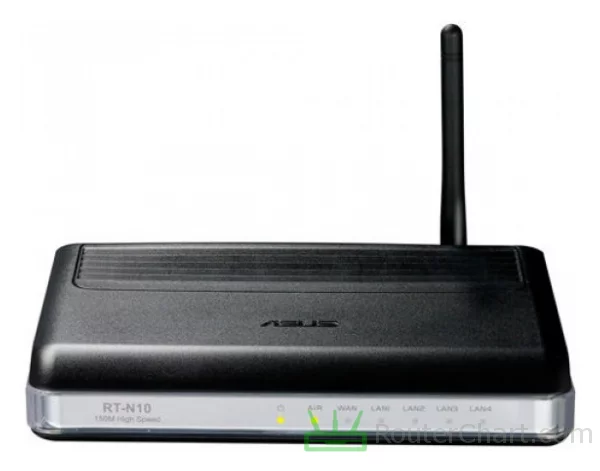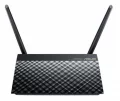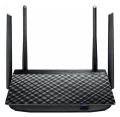Asus RT-N10 router review
Asus introduced the RT-N10 router in 2009. It is powered by Broadcom BCM5356A1 @ 300 MHz chipset, 16 MB of RAM, and 4 MB of flash memory.
Excited to learn if the RT-N10 lives up to expectations? Keep following along!
Table of Contents
- Asus RT-N10 specifications
- Body, dimensions, weight
- System, chipset, RAM, flash, power supply
- Network, protocols, WAN and LAN ports
- Wireless, antennas, speed, security
- Connectivity
- Administration, user interface, login information
- Links
- Verdict, Pros and Cons
- Photos
- Comparisons
Our personal experiences and opinions form the basis of this article. We aimed to share insights on a topic, and we hoped others would find it useful and inspirational. If you noticed any mistakes or missing details about the Asus RT-N10, please let us know.

The RT-N10 is a basic Wi-Fi router. It provides reliable wireless connectivity for small homes. Asus has established a solid reputation as a reliable and reputable networking brand.
Asus RT-N10 specifications
| Brand | Asus |
|---|---|
| Name | RT-N10 |
| Type | RT-N10 |
| Rating | |
| Launch | 2009 |
Body
| Dimensions | 165 x 115 x 30 mm |
|---|---|
| Weight | 260 g |
If you live in a small apartment, the size of the router is crucial to deciding whether it will fit. If you plan to mount your router on a wall or ceiling, the weight can affect the mounting process.
System
| Chipset | Broadcom BCM5356A1 @ 300 MHz |
|---|---|
| RAM | 16 MB |
| Flash | 4 MB |
| OS | Asus |
| Alternative OS | OpenWRT DD-WRT |
| Power supply | 9 V / 1 A |
The Broadcom BCM5356A1 @ 300 MHz CPU affects the router's performance, working with RAM and firmware. The 16 MB of RAM helps the router manage many tasks concurrently OpenWrt has a community that actively develops it. They continuously work on improving its security.
Network
| Protocols | IPv4 |
|---|---|
| LAN ports | 4 x 10/100 Mbps |
| WAN ports | 1 x 10/100 Mbps |
| Mobile network | no |
| VPN support | no |
Wired connections may bottleneck due to the limits of Fast Ethernet ports.

Wireless
| Antennas | 1 x 2 dBi RP-SMA |
|---|---|
| 2.4 GHz | yes |
| 5 GHz | no |
| 60 GHz | no |
| Standards | IEEE 802.11b/g/n |
| Class | N150 |
| Speed | 150 Mbps |
| Transmit power | 18 dBm |
| Security | WEP WPA WPA2 WPS |
| Guest network | no |
The RT-N10 is compatible with 2.4 GHz Wi-Fi networks. Older routers have a more limited range than newer Wi-Fi standards. So, they're less suitable for larger homes or offices. The introduction of WPA2 (Wi-Fi Protected Access 2) improved upon WEP. It provides stronger security. The Wi-Fi Protected Setup (WPS) lets you join a safe wireless network with the push of a button or a simple PIN entry.
Connectivity
| USB ports | no |
|---|---|
| Print server | no |
| File server | no |
The RT-N10 router doesn't have file-server or print-server functionality.
Administration
| Default IP | 192.168.1.1 |
|---|---|
| Default username | admin |
| Default password | admin |
Changing the password often is a good security practice. It protects your network and devices from unauthorized access. Changing the default password improves your router's security. It reduces the risk of unauthorized individuals controlling your network.
Links
| Official site | https://www.asus.com/ |
|---|
Pros and Cons
Every router, including this Asus one, has its good sides and not-so-good sides. Let's take a closer look at both to get a full understanding of what this router can do. Just remember, this is just what I think, and you might see things differently.
Pros
- lightweight
- OpenWrt compatible
- WPS friendly
Cons
- insufficient memory
- insufficient flash
- lack of Gigabit LAN
- Non-gigabit WAN port
- missing Wi-Fi 6 support
- lacks Wi-Fi 5 compatibility
- reduced Wi-Fi bandwidth
- incompatible with WPA3
- no USB connectivity
Asus RT-N10 photos



Asus RT-N10 comparisons
We've noticed that many of our visitors like to compare the Asus RT-N10 router with these popular models.
If there’s information about the Asus RT-N10 that you would like to see on this site, then write to us.
Updated: May 25, 2024





